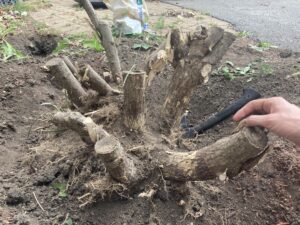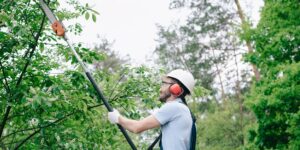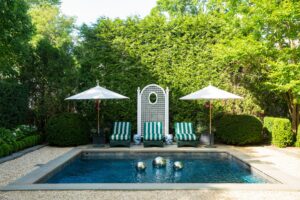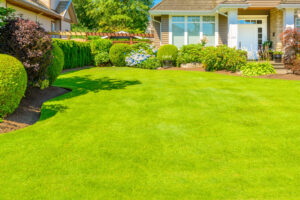Living Fence Ideas: 10 Natural Boundary Solutions for Your Property
When looking to define your property boundaries, enhance privacy, or simply add beauty to your landscape, living fences offer an elegant and environmentally friendly alternative to traditional fencing. Unlike static wooden or metal structures, living fences grow, change with the seasons, and provide numerous ecological benefits while serving practical purposes.
What Is a Living Fence?
A living fence is exactly what it sounds like—a fence made from living plants. These natural boundaries can be created using a variety of plants, from dense shrubs to flowering trees, depending on your specific needs and aesthetic preferences. Living fences can be formal and manicured or wild and natural, offering incredible versatility for any landscape design.
According to the USDA Natural Resources Conservation Service, living fences “can provide multiple conservation benefits in both urban and rural landscapes,” including wildlife habitat, erosion control, and improved air quality. For more information on conservation practices involving living fences, you can visit the USDA Conservation Practice Standard.
Benefits of Living Fences
Before diving into specific living fence ideas, let’s explore why you might consider installing one:
Environmental Benefits
- Provide habitat for wildlife, including birds, beneficial insects, and pollinators
- Improve air quality by producing oxygen and filtering pollutants
- Reduce noise pollution from roads or neighboring properties
- Prevent soil erosion with extensive root systems
- Create microclimates and windbreaks
Practical Benefits
- Often less expensive than traditional fencing materials
- Self-repairing and can strengthen over time
- Typically don’t require permits in many municipalities
- Can increase property values through enhanced landscaping
- Last for decades with proper maintenance
Aesthetic Benefits
- Change with the seasons, providing year-round visual interest
- Soften property boundaries with natural forms
- Offer opportunities for flowering plants and edible options
- Create a more welcoming impression than hard fencing
10 Living Fence Ideas for Your Property
Now that you understand the concept and benefits, here are ten creative and effective living fence ideas to consider for your property.
1. Evergreen Privacy Screen
For year-round privacy and a clean, classic look, evergreen shrubs and trees create an excellent living fence. Arborvitae (Thuja) varieties are particularly popular for this purpose in the US, with ‘Green Giant’ and ‘Emerald Green’ cultivars being top choices.
To create an effective evergreen screen, plant your chosen species in a straight line, spacing them according to their mature width. For most arborvitae varieties, this means placing them 3-4 feet apart. You’ll achieve full privacy within 3-5 years as the plants grow and fill in.
For faster results, consider Italian Cypress or Leyland Cypress, both of which grow quickly but require proper spacing to avoid disease issues. If you have more space to work with, consider layering different evergreen species for added depth and visual interest.
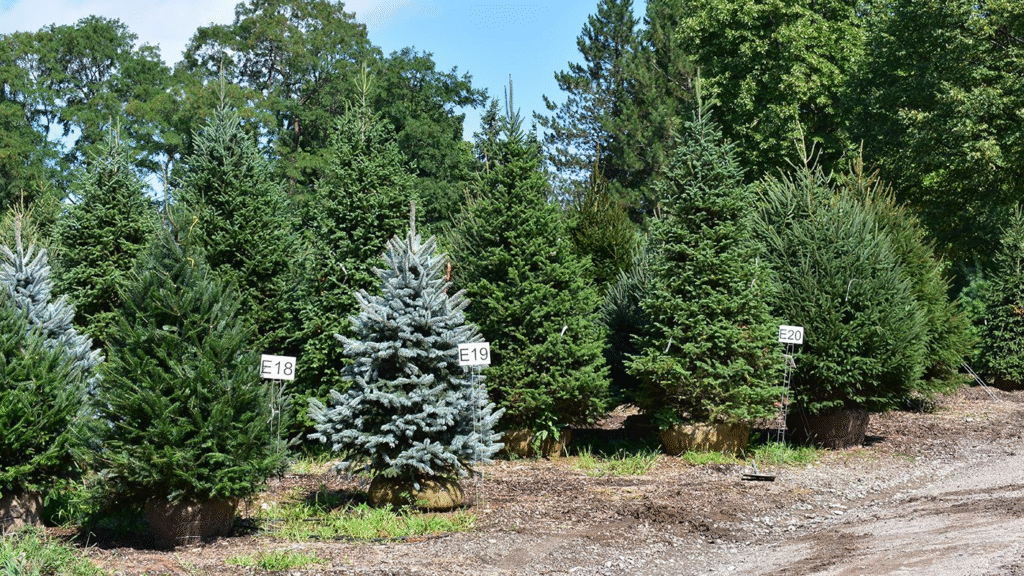
2. Flowering Hedge Delight
If beauty is a priority alongside functionality, flowering hedges offer the best of both worlds. With careful selection, you can enjoy blooms from spring through fall while maintaining an effective boundary.
Lilac (Syringa) varieties provide spectacular spring fragrance and flowers, while Rose of Sharon (Hibiscus syriacus) delivers summer blooms in a range of colors. For fall interest, consider adding Beautyberry (Callicarpa) for its striking purple berries or Witch Hazel (Hamamelis) for late-season blooms and interesting branching patterns.
To create a flowering hedge fence:
- Choose several complementary species that bloom in different seasons
- Plant taller varieties toward the back and shorter ones in front
- Allow sufficient space for mature growth
- Prune after flowering to maintain shape and encourage blooms
With proper planning, your flowering hedge can provide privacy, boundary definition, and a spectacular show of color throughout the growing season.

3. Edible Boundaries
Why not make your fence productive as well as beautiful? An edible living fence combines boundary definition with food production—a win-win for homeowners with limited space.
Fruit-bearing shrubs like blueberries make excellent shorter fences, while dwarf fruit trees can form the backbone of a taller boundary. Consider these edible options for your living fence:
- Highbush blueberry (Vaccinium corymbosum) – Provides berries in summer and brilliant fall color
- Hazelnuts (Corylus americana) – Offers nuts and can be pruned to desired height
- Dwarf apple or pear trees – Can be espaliered (trained to grow flat) along a support
- Thornless blackberries – Create a dense barrier when trained along a simple wire support
- Service berry (Amelanchier) – Produces edible berries and beautiful spring flowers
For a more structured edible fence, you might consider an espalier technique, training fruit trees to grow in a flat pattern along wires or a simple frame. This traditional approach is space-efficient and creates a formal appearance while producing fruit.
The U.S. Department of Agriculture provides resources on selecting appropriate fruit varieties for your specific growing zone. You can check their recommendations at the USDA Plant Hardiness Zone Map.

4. Mixed Native Hedgerow
For the most ecological benefits, consider creating a mixed native hedgerow using plants indigenous to your region. Native plants are adapted to local conditions, requiring less maintenance while providing maximum habitat value for local wildlife.
A mixed native hedgerow typically includes:
- Understory trees like dogwoods or redbuds
- Shrubs of varying heights
- Perennial flowers at the edges
- Native grasses for ground coverage
The irregular structure mimics natural edges found in the wild, creating a diversity of habitats for birds, butterflies, and beneficial insects. While less formal than a traditional hedge, a native hedgerow provides unparalleled ecological benefits while still defining property boundaries.
To find native plants appropriate for your region, the National Wildlife Federation’s Native Plant Finder is an excellent resource. Select species with different flowering times, berry production periods, and growth habits to maximize biodiversity.
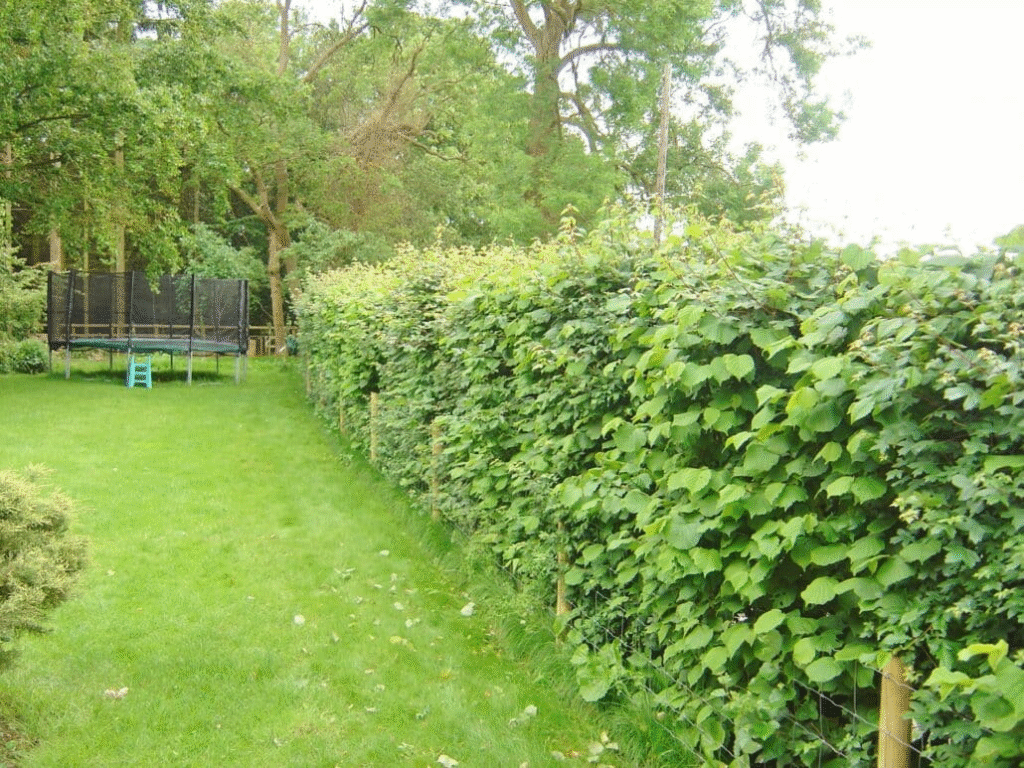
5. Bamboo Barriers
For rapid growth and a distinctive aesthetic, bamboo creates a striking living fence. However, it’s crucial to choose the right species and installation method to avoid the invasive spreading that bamboo is notorious for.
Clumping bamboo varieties like Fargesia are generally preferred over running types for fence applications, as they expand slowly and stay more contained. Popular options for U.S. gardens include:
- Fargesia rufa (Sunset Glow Bamboo) – Cold-hardy to zone 5
- Bambusa multiplex (Hedge Bamboo) – For warmer regions
- Fargesia robusta (Green Screen) – Upright growth to 15 feet
If you do opt for a running bamboo variety for its height or quick-growing properties, installation of a proper rhizome barrier is essential. This typically involves burying a 30-inch deep barrier made of high-density polyethylene around the planting area.
When properly contained, bamboo creates an exotic, lush screen that provides year-round privacy and a distinctive sound when breezes rustle through the leaves.

6. Osage Orange Traditional Fence Row
Long before modern fencing materials, American farmers created living fences using Osage orange (Maclura pomifera). These thorny, dense trees were planted closely together and pruned to create impenetrable barriers that could contain livestock—earning them the nickname “horse high, bull strong, and pig tight.”
While less common today, Osage orange still makes an excellent traditional living fence for large properties, particularly in the Midwest and South where it thrives. The benefits include:
- Extreme durability and longevity (trees can live 150+ years)
- Dense growth habit that resists penetration
- Drought tolerance once established
- Distinctive lime-green fruits in fall
- Beautiful yellow fall foliage
If the thorns of Osage orange concern you, similar effects can be achieved with American holly or certain hawthorn varieties. These traditional approaches connect your landscape to American agricultural heritage while providing effective boundaries.
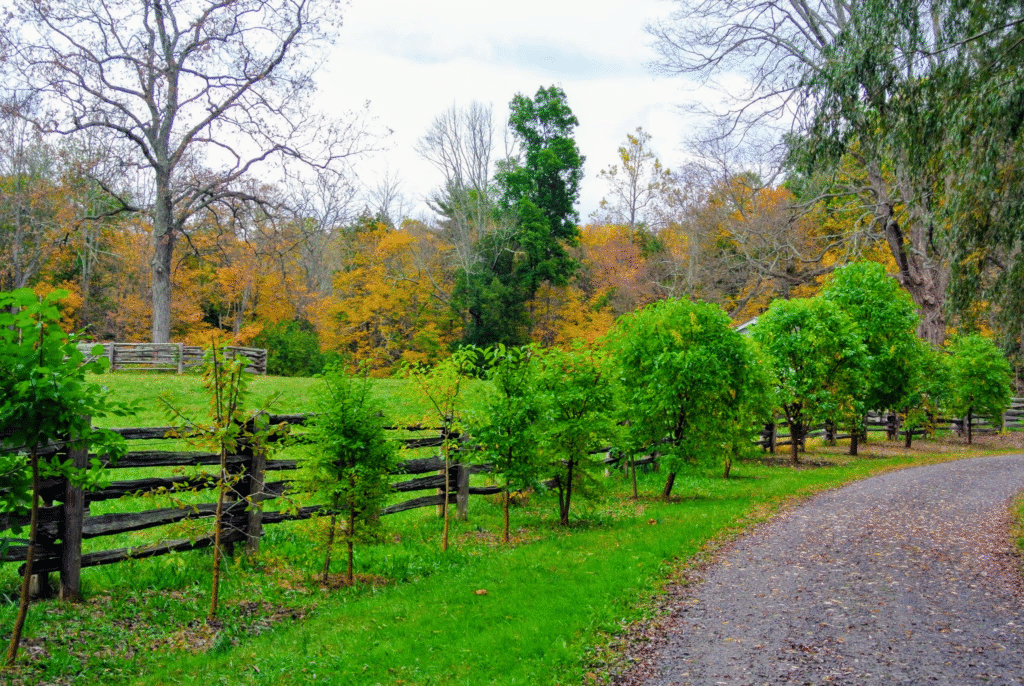
7. Vertical Garden Privacy Screens
For urban settings or small spaces, consider a modern take on the living fence: vertical garden screens. These structures combine supportive elements with climbing or trailing plants to create green walls that offer privacy and beauty in minimal space.
To create a vertical garden screen:
- Install a supportive structure (wood frame, metal grid, or specialized vertical garden system)
- Select appropriate climbing plants
- Provide adequate soil volume at the base
- Install irrigation if needed
Excellent plant choices for vertical screens include:
- Climbing hydrangea for shady locations
- Clematis for flowering interest
- Virginia creeper for spectacular fall color
- Hops for fast-growing seasonal coverage
- Annual vines like morning glory for temporary solutions
This approach works particularly well for defining outdoor living spaces, screening utilities, or creating privacy for urban patios and decks.
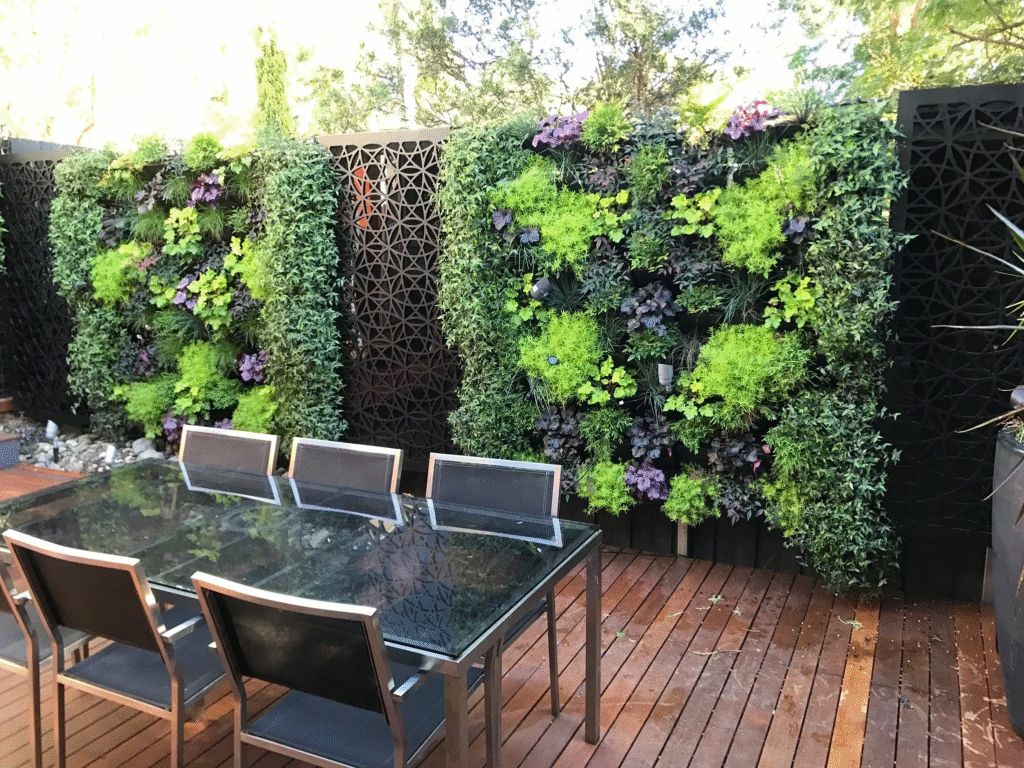
8. Pollinator Paradises
With declining pollinator populations across North America, creating habitat is increasingly important. A pollinator-focused living fence serves dual purposes: defining your space while supporting bees, butterflies, and other beneficial insects.
To create a pollinator paradise fence:
- Include plants that flower from early spring through late fall
- Select native species when possible
- Incorporate various flower shapes and sizes
- Include larval host plants for butterflies
- Avoid pesticide use
Here’s a comparison of some excellent pollinator plants for living fences in different U.S. regions:
| Plant Name | Region | Height | Bloom Time | Pollinators Attracted |
|---|---|---|---|---|
| Buttonbush | Eastern/Central | 6-12 ft | Summer | Butterflies, bees, hummingbirds |
| Ceanothus | Western | 6-15 ft | Spring | Native bees, butterflies |
| Bluebeard | Most of US | 3-5 ft | Late summer | Butterflies, bees |
| Elderberry | Most of US | 6-12 ft | Spring | Bees, butterflies, birds |
| New Jersey Tea | Eastern/Central | 3-4 ft | Summer | Small native bees |
| Ninebark | Northern US | 5-8 ft | Spring | Native bees, butterflies |
| Chokecherry | Northern US | 15-30 ft | Spring | Bees, butterflies, birds |
| Desert Willow | Southwest | 15-25 ft | Summer | Hummingbirds, bees |
By selecting appropriate species for your region, you’ll create a beautiful boundary that buzzes with life and supports your local ecosystem.
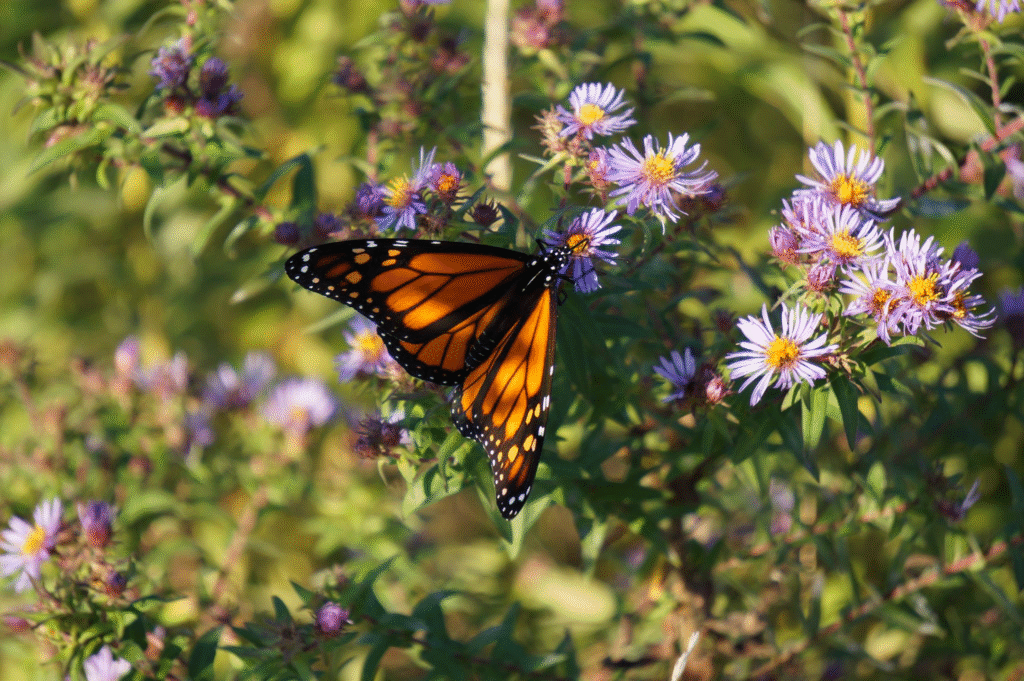
9. Willow Living Structures
For a truly artistic approach to living fences, consider the ancient practice of willow weaving. Various willow species can be planted and trained into intricate patterns, creating fences that are both functional and sculptural.
The process involves:
- Planting living willow rods (cuttings) in your desired fence line
- Training the growing shoots into a pattern as they develop
- Weaving new growth to reinforce the structure
- Pruning regularly to maintain the form
Styles range from simple woven willow fences to elaborate arches, domes, and tunnels. Since willows root readily from cuttings, this approach allows for creative expression in your landscape while establishing a living boundary.
Basket willow (Salix viminalis) and other flexible willow varieties work best for these applications. While more labor-intensive than other living fence approaches, the results can be spectacular and unique.
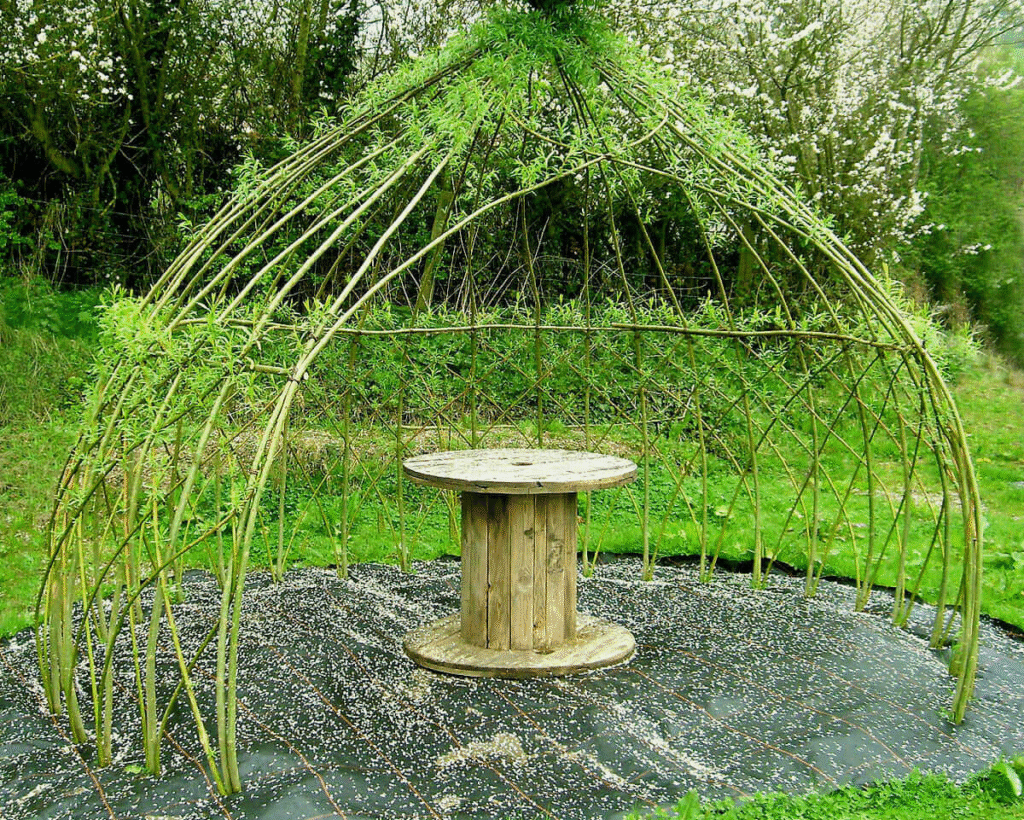
10. Defensive Barrier Plants
If security is a primary concern, certain plants create effective defensive barriers that discourage unwanted access while adding beauty to your landscape.
Thorny or prickly species that make excellent security barriers include:
- Barberry (Berberis) – Dense growth with sharp thorns
- Pyracantha (Firethorn) – Produces colorful berries but has significant thorns
- Rosa rugosa – Tough, salt-tolerant roses with thorny stems
- Holly varieties – Prickly leaves create an effective deterrent
- Hawthorn – Traditional security hedge with significant thorns
For the most effective defensive hedge, plant these species closely and prune to encourage dense growth. The result is a beautiful but formidable barrier that discourages both human and animal intruders.

How to Establish Your Living Fence
Now that you’ve explored the different types of living fences, here’s how to get started with installation:
Planning Your Living Fence
- Determine your primary goals (privacy, wildlife attraction, food production, etc.)
- Measure your fence line and note sun exposure and soil conditions
- Research plants appropriate for your climate zone and conditions
- Create a planting plan with proper spacing for mature sizes
- Check local regulations regarding height restrictions or setbacks
Installation Tips
- Prepare soil thoroughly before planting
- Consider installing temporary fencing while your living fence establishes
- Plant during appropriate seasons (typically fall or spring)
- Apply mulch to suppress weeds and conserve moisture
- Water regularly during the establishment period
Maintenance Requirements
Your living fence will require some ongoing care, though generally less than maintaining a conventional fence. Typical maintenance includes:
- Watering during dry periods (especially in the first 2-3 years)
- Annual pruning to maintain desired shape and density
- Occasional fertilization as needed
- Monitoring for pests or diseases
- Removal of weeds that compete for resources
With proper care, most living fences will continue to improve with age, becoming more effective and beautiful as they mature.
Conclusion
Living fences offer a perfect blend of functionality and beauty for your property. Whether you’re seeking privacy, security, food production, or wildlife habitat, there’s a living fence solution that can meet your needs while enhancing your landscape.
By selecting appropriate plants for your climate and conditions, you’ll create a boundary that evolves with the seasons, provides ecological benefits, and potentially lasts for generations. Unlike static fencing materials, living fences grow more valuable and effective with time, making them an investment in both your property and the environment.
Consider which of these ten living fence ideas might work for your specific situation, and don’t be afraid to combine approaches for a customized solution. With some planning and patience, you’ll soon enjoy the many benefits of defining your space naturally with living plants.
Remember to check with your local extension office for specific recommendations for plants that thrive in your particular region and soil conditions. The investment in time and research will result in a living fence that enhances your property for years to come.

